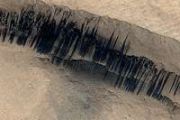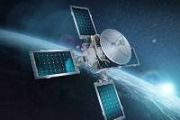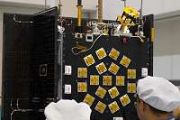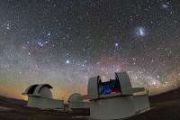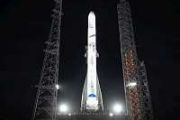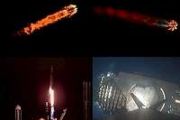
Copernical Team
Leaf Space enables Sateliot to scale without significant capex in the ground segment
 Sateliot, the first company to operate a low-Earth orbit (LEO) nanosatellite constellation with 5G IoT standards and that extends coverage of Mobile Telecom Operators to any place in the planet, has successfully integrated its satellite communication stack with Leaf Space's Ground Segment as a Service (GSaaS) Network. This milestone is crucial for the upcoming Transporter-11 mission by SpaceX, d
Sateliot, the first company to operate a low-Earth orbit (LEO) nanosatellite constellation with 5G IoT standards and that extends coverage of Mobile Telecom Operators to any place in the planet, has successfully integrated its satellite communication stack with Leaf Space's Ground Segment as a Service (GSaaS) Network. This milestone is crucial for the upcoming Transporter-11 mission by SpaceX, d Cosmic Shielding protects Nvidia Ai hardware in upcoming Spacex launch
 Cosmic Shielding Corporation (CSC), providers of the worlds leading space radiation shielding technologies, will be utilized to develop an AI-capable space computer that uses the Nvidia Jetson Orin NX GPU. This will mark the first time a GPU from the latest Nvidia Orin ecosystem has been sent to space and will be part of the SpaceX Falcon 9 rocket launch from Vandenberg Space Force Base, Califor
Cosmic Shielding Corporation (CSC), providers of the worlds leading space radiation shielding technologies, will be utilized to develop an AI-capable space computer that uses the Nvidia Jetson Orin NX GPU. This will mark the first time a GPU from the latest Nvidia Orin ecosystem has been sent to space and will be part of the SpaceX Falcon 9 rocket launch from Vandenberg Space Force Base, Califor Scientists reveal the density differences of sub-Neptunes due to resonance
 The majority of stars in our galaxy host planets, with sub-Neptunes, which are planets sized between Earth and Neptune, being the most common. Estimating their density has been a significant challenge for scientists because the method used to measure their mass highlights two distinct populations: dense and less dense. Recent work by the NCCR PlanetS, the University of Geneva (UNIGE), and the Un
The majority of stars in our galaxy host planets, with sub-Neptunes, which are planets sized between Earth and Neptune, being the most common. Estimating their density has been a significant challenge for scientists because the method used to measure their mass highlights two distinct populations: dense and less dense. Recent work by the NCCR PlanetS, the University of Geneva (UNIGE), and the Un Discovering Milan: A Comprehensive Guide to Exploring the Milan Cathedral and Beyond
 Milan, Italy's fashion and financial capital, is a city that effortlessly combines history, culture, and modernity. From its stunning architecture to its world-renowned shopping districts, Milan offers a plethora of experiences for every traveler. At the heart of this bustling metropolis lies the Milan Cathedral, or Duomo di Milano, an architectural marvel that has captivated visitors for cen
Milan, Italy's fashion and financial capital, is a city that effortlessly combines history, culture, and modernity. From its stunning architecture to its world-renowned shopping districts, Milan offers a plethora of experiences for every traveler. At the heart of this bustling metropolis lies the Milan Cathedral, or Duomo di Milano, an architectural marvel that has captivated visitors for cen UArizona's first satellite built by students is ready for launch
 The sun barely peeks over the horizon as a suitcase-like transport box exits Steward Observatory, home to the University of Arizona Department of Astronomy. Inside, held snugly in place by foam, is precious cargo: CatSat, the university's first satellite built entirely by students.
After loading it into the back of the car, Shae Henley and Walter Rahmer, both engineering students at UArizo
The sun barely peeks over the horizon as a suitcase-like transport box exits Steward Observatory, home to the University of Arizona Department of Astronomy. Inside, held snugly in place by foam, is precious cargo: CatSat, the university's first satellite built entirely by students.
After loading it into the back of the car, Shae Henley and Walter Rahmer, both engineering students at UArizo NASA Shares Use Requirements With Commercial Destination Partners
 the space agency hosted a meeting to share knowledge with companies developing future commercial destinations at the agencys Johnson Space Center in Houston. The discussion could aid in developing safe, reliable, innovative, and cost-effective space stations. Industry representatives from more than 20 companies attended.
The program focused on the space agencys planned use of commercial de
the space agency hosted a meeting to share knowledge with companies developing future commercial destinations at the agencys Johnson Space Center in Houston. The discussion could aid in developing safe, reliable, innovative, and cost-effective space stations. Industry representatives from more than 20 companies attended.
The program focused on the space agencys planned use of commercial de Tiny bright objects discovered at dawn of universe baffle scientists
 A recent discovery by NASA's James Webb Space Telescope (JWST) confirmed that luminous, very red objects previously detected in the early universe upend conventional thinking about the origins and evolution of galaxies and their supermassive black holes.
An international team, led by Penn State researchers, using the NIRSpec instrument aboard JWST as part of the RUBIES survey identified th
A recent discovery by NASA's James Webb Space Telescope (JWST) confirmed that luminous, very red objects previously detected in the early universe upend conventional thinking about the origins and evolution of galaxies and their supermassive black holes.
An international team, led by Penn State researchers, using the NIRSpec instrument aboard JWST as part of the RUBIES survey identified th Search for extraterrestrial life focuses on detecting exoplanet atmospheres
 Examining atmospheres around planets beyond our solar system is a crucial step in the search for extraterrestrial life. Astronomist Sebastian Zieba, using data from the James Webb Space Telescope, has been studying small rocky exoplanets. Although no signs of life have been detected yet, his research remains significant for future studies. Zieba graduated cum laude on 25 June.
"The holy gr
Examining atmospheres around planets beyond our solar system is a crucial step in the search for extraterrestrial life. Astronomist Sebastian Zieba, using data from the James Webb Space Telescope, has been studying small rocky exoplanets. Although no signs of life have been detected yet, his research remains significant for future studies. Zieba graduated cum laude on 25 June.
"The holy gr Private companies key players in China's space development
 The trial of Tianlong 3 a two-stage kerosene-liquid oxygen rocket developed by Beijing Tianbing Technology failed in Gongyi, Henan province, on Sunday. The company apologized on Tuesday for the accident.
Most private space enterprises were founded after November 2014, when the State Council started encouraging private capital to participate in space infrastructure construction for civil us
The trial of Tianlong 3 a two-stage kerosene-liquid oxygen rocket developed by Beijing Tianbing Technology failed in Gongyi, Henan province, on Sunday. The company apologized on Tuesday for the accident.
Most private space enterprises were founded after November 2014, when the State Council started encouraging private capital to participate in space infrastructure construction for civil us Japan launches an advanced Earth observation satellite on its new flagship H3 rocket
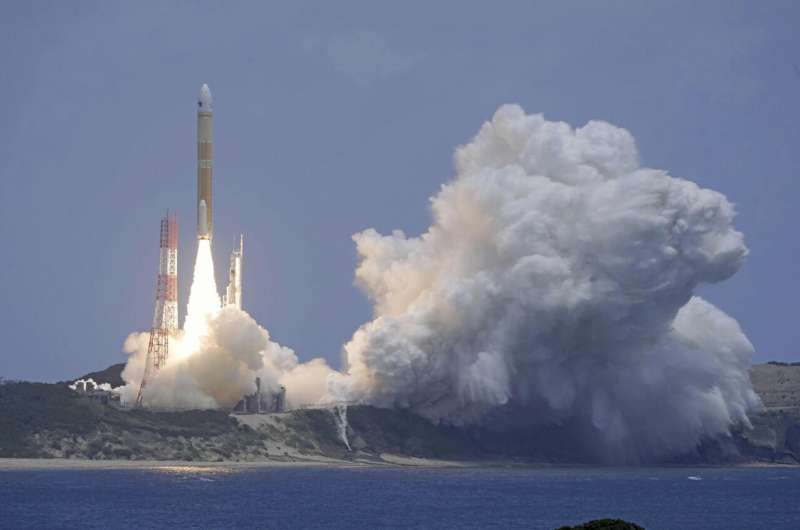
Japan deployed an upgraded Earth observation satellite for disaster response and security after it was launched on a new flagship H3 rocket Monday.
The H3 No. 3 rocket lifted off from the Tanegashima Space Center on a southwestern Japanese island and released its payload about 16 minutes later as planned, the Japan Aerospace Exploration Agency, or JAXA, said during a livestream.














